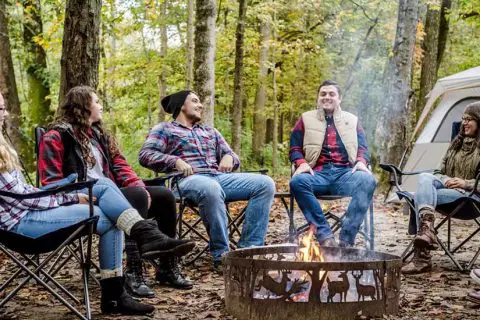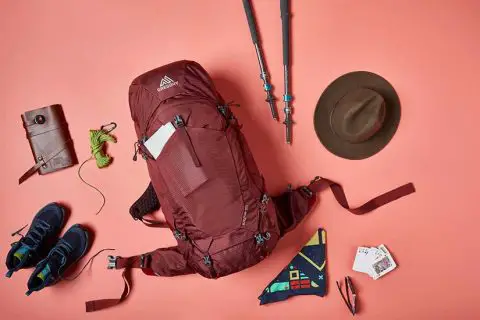Hiking is an agelong outdoor activity and though it is fun and rewarding of efforts, it is obviously not as easy as it sounds. While some see the activity of walking long distances up and round the mountainous terrain as a needless activity or waste of strength, it is more about purpose, passion, and accomplishment to many. The reasons for hiking may however differ, but hiking sure fits the categories of things called ‘exercise’ which you do to keep yourself always geared up and physically figured out.
It takes no effort to imagine a picture-perfect walk up the trails, the nice scenery from up the summit and all, but the one thing missing out in such imaginations is the sweat inputs needed to take on the physical demands of a hike. While hiking is such an activity of mental escape, the labor-intensiveness and cardiovascular requirements of it aren’t something that can easily be conjoined or overlooked. So, hiking is a good way to soak yourself in the bliss of the outdoors and can come in as a great activity to get your mental alertness upped and keep your body in shape. Whether you step out to discover the beauty of the outdoors, or alone into the wild to find yourself, you are in one way or the other doing much of what hiking is subtly about -exercise.
Hiking has a lot of perks to it and comes with a number of benefits. It has the potential to reduce the possibility of heart disease, improve your core strength, hamstrings, glutes, lower legs, muscles and quadriceps, enhance balance, improve bone density, give a boost to your blood sugar levels and help maintain your weight. As hiking is commonly recognized for its impact on the physical balance of the body, so also does it bring significant effect on your emotional life. It can boost your mood and help you figure out a lot of things you probably would still be stuck in in the “real world”.
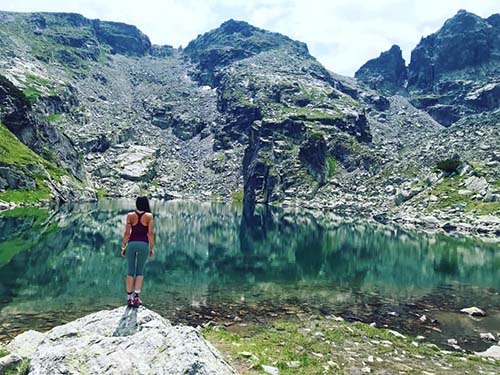
To start out or take your hiking exercise to the next level, there are a couple of things you may need to find yourself doing:
- First, you need to launch slow. If you are a beginner, start out with short hikes. Hike with friends or in groups, and from there, you can gradually walk your way up through to hiking alone. You should try out not too steep hills or terrains until you get your feet firm and well introduced to the trails.
- It may take a bit of time to find your balance or get used to pushing yourself up the slopes, so trying out poles can be a good thing to do. The poles help dig deep into the ground and propel you ahead just as you push your muscles’ limits to get into shape.
- No matter how small the hill can seem, it is usually enough to get your heart worked up and even get rid of some calories. So, yes, go for the hills. With as little as 5-10 degrees elevation, you can get as much as 40 percent boost in calorie burn.
- Don’t be afraid to take on the bumpy routes. The rough and rugged terrains have a proven way of helping your muscles get worked up as you build on your stability and balance.
- Travel light, step out with little or no clutter. As our coined rule of thumb which we recommend: any item that does not bring as much as 80-90% utility to your hiking exercise should be left back. When stepping out to hike, you want to be as light as possible so that you are not pulled down by the weight of things you carry in your backpack.
- Get used to the trail maps and be aware of all you need to know about a route before hitting the trails.
If you are looking to exercise on your next holiday or available time with hiking, you can consider the following tips to get started, especially if you’re a beginner. With a bit of preparation and planning, you’d easily see it’s an activity you should enjoy and not just go through for the sake of it.
1. Get A Hiking Partner
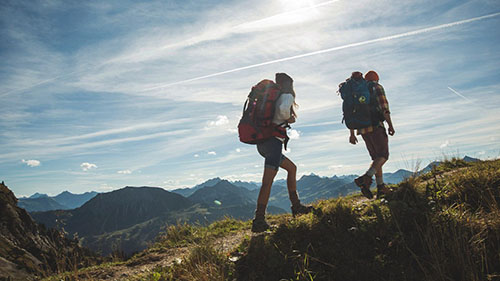
If you have got hiking lovers and enthusiasts alike as friends, ask that they take you along on their next walk. The truth is most hikers are happy to bring you on and share their experience, let you use their gears and introduce newcomers to their loved trails. And perhaps you do not have any hiker as friend, you can be lucky to get a hiking club where you are as many cities have hiking clubs that frequently go on hiking outings. REI and MeetUp are some of the platforms you can easily find hiking outings, classes, events and even hiking friends.
Getting into the outdoors and trying out a hike alone can be somewhat liberating and offer you a feeling of freedom you wouldn’t get elsewhere. However, it can be really be daunting and full of outright loneliness at times. If you’re stepping out into the trails for the first time, you may want to be in a company of a hiker(s) so you are not stuck alone especially in case you get hurt. But if hiking the mountains alone is the only option you have got, then we’ll advise you start out with short walks to well-known hiking destinations and ensure someone is kept in the loop always as to where you are heading to and the amount of time you intend to spend out there.
2. Select A Hiking Trail

You can get well informed when you spend time reading guidebooks and browsing websites as to stuffs like elevation gain, distance, difficulty level, water sources, trail peculiarities, directions and whether dogs and other pets alike are allowed to come with you. You can also easily get informed on recent hike reports that may allow you have an understanding of what the trails currently look like and how to plan for the hike through that trail. You can also get suggestion from hiker friends if yu have on locations you should choose.
One other method of getting a trail to hike is to chat with locals and rangers in the areas you intend to hike. Rangers usually have firsthand information on the conditions of the trailed and are well-versed in recommending hiking zones per skill levels.
You can also visit:
3. Choosing Your Gears
As huge as hiking may seem, one of the good things about it is that you usually have no need for high-tech utilities to get into the wild and start on the trail. All you need to get started is just a couple of essential gears for the hike and a ready mind for adventure and you’re ready to step out on the trails.
Top 10 essentials for your hiking exercise
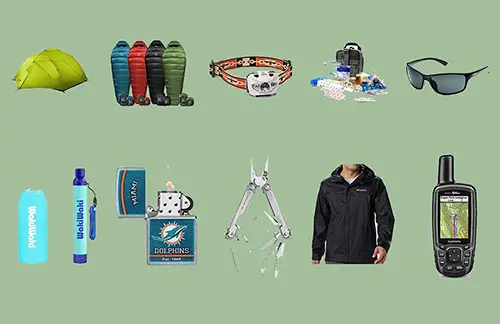
To get the best out of your hiking exercise, it is important you have your gears ready. We know you don’t need much gears but the ones that are necessary must be well prepared before you step out to hike. These gears will include food, hydration pack or water bottle, hiking boots, first aid, backpack, navigation, headlamp, fire, Jacket, and multi-tool.
You can also visit:
- What Are The 10 Essentials For Camping
- What Are 10 Items In A First Aid Kit
- What Multi-tool Should I Buy for Camping?
- The 5 Best Outdoor Watches Under $200
- Best Budget Trekking Poles
- Best Waterproof Jacket Under $100
- What is Windbreaker Jacket?
- Best Convertible Hiking Pants
- Best Budget Hiking Pants
Hiking boots

This is one of the most pivotal items you have got to be deliberate about especially when making a choice of which to go for. It is more of a personal choice but your comfort, traction and lightweight ability should be some of your priorities. In terms of personal choice, some hikers prefer to go for the over-the-ankle types due to support, and some other hikers are okay with just a lightweight running shoe which doubles as a hiking boot.
Another thing you have to consider for your choice of boot is the type of terrain you will be hiking on, whether it is smooth and well-maintained (little obstacles) or filled with rocks and streams. So, to get the best out of your hiking exercise, you’ve got to go for the right boots which wouldn’t hurt your feet or leave it sore and will keep your feet comfortable no matter how long the hike may take.
You can also visit:
Hiking Backpack
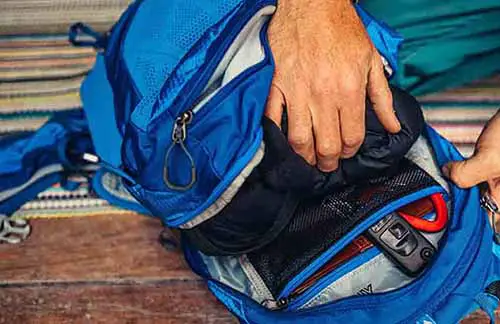
Backpacks are every bit as important as your hiking shoes and you shouldn’t take it lightly. This is where you keep most of your essentials. The size of your backpack will usually be determined by how long you want to stay in the wild and for hikes that do not extend beyond a day, a small size with 16-20 L carrying capacity is okay. But if you intend to stay further for more days, you’ll definitely be carrying a lot more gears and so, you need a backpack with nothing below 25-30 liters.
You can also visit:
- Best Small Hiking Backpacks
- Hiking Carrier For 2 Year Old
- How to Measure Backpack Volume
- How Big is a 40 Liter Backpack?
- Top 5 Most Durable Backpacks for Traveling
From the viewpoint of hiking as an exercise, it is important to introduce into your fitness plan, workouts for hiking. These particular exercises will strengthen and tone your muscles that goes into getting you moving on the trail. The result is that you have increased agility, speed and endurance so your adventure into the wild is better enjoyed as you want to. So, you need these workouts to get in shape for your next hiking adventure:
Lunges

Lunges in their absolute form are a great exercise to get your mind set and body revved up for hiking. But many people make the mistake of undermining the shredding effects downhill lunges have on your quads. More so, many hikers are usually on the scare of the climbs as they envisage it to be the most difficult part of the exercise process. On the bright side, lunges do not only get your quads ready for whatever steep descent but are pivotal at keeping your main muscles and stabilizers well-fortified. To perform a lunge exercise, lift the same amount of weights in both hands and from an upright position, take a short step forward until you have both of your legs bent at ninety (90) degrees. Push yourself up while you bring forward your rear foot. Then, you do the same for the second leg.
Step-ups
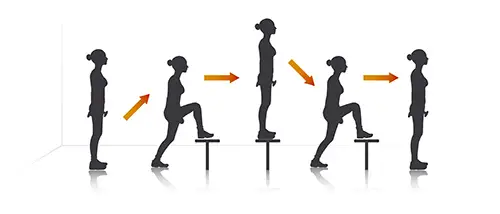
How good are step-ups? They help you develop your glutes and quads, which are pivotal muscle areas for hiking the mountains. You can easily do step-ups at any gym with the help of a box. You can as well do it at home suppose you don’t have a membership at a gym. You can do this by standing upright while facing the box. If you have never tried this before, you should begin with a box of lower height; reach for a height of ten to sixteen inches. You will realize the need to get taller boxes when you start to feel very comfortable doing the step-ups on the lower ones. Lift one of your feet to the top of the box and step up onto the box with the help of your muscles. Stretch your hips fully so that you are in an upright position on the box with both legs. Then, with that same leg, you step down from the box. Do the same with your other leg.
Stretching

One more workout among many others which you will find necessary for hiking is stretching. The stretch workout is essential for ensuring you stir clear of injuries and get your strength back as fast as possible. In recent times, doing stretches which involve holding a static position for a specific amount of time are considered a no-go before exercise. In place of this, you should consider a non-static type of stretching for around five to ten minutes before doing strength workouts. This could be butt kick, temperate morning jog, or high knees. The why for this is to get your heart rate up and alive in readiness for hiking or strength workouts. They will also enhance your flexibility, mitigate the risk or possibility of sustaining injury, and ensure lactic acid is driven out of your body. As soon as you are off the hiking trails, ensure you stretch out your glutes, quads, hamstrings and other central muscles of your body.
Conclusion
To decide to hit the trails, and go for hiking is brave, so much more is your intention to make the most out of it. Hiking is great for exercise and is perhaps the most natural way to keep your body in shape while you savor the beauty that lie in the wild. Thinking of setting and taking up a hiking challenge for yourself? The time to do it is now!


